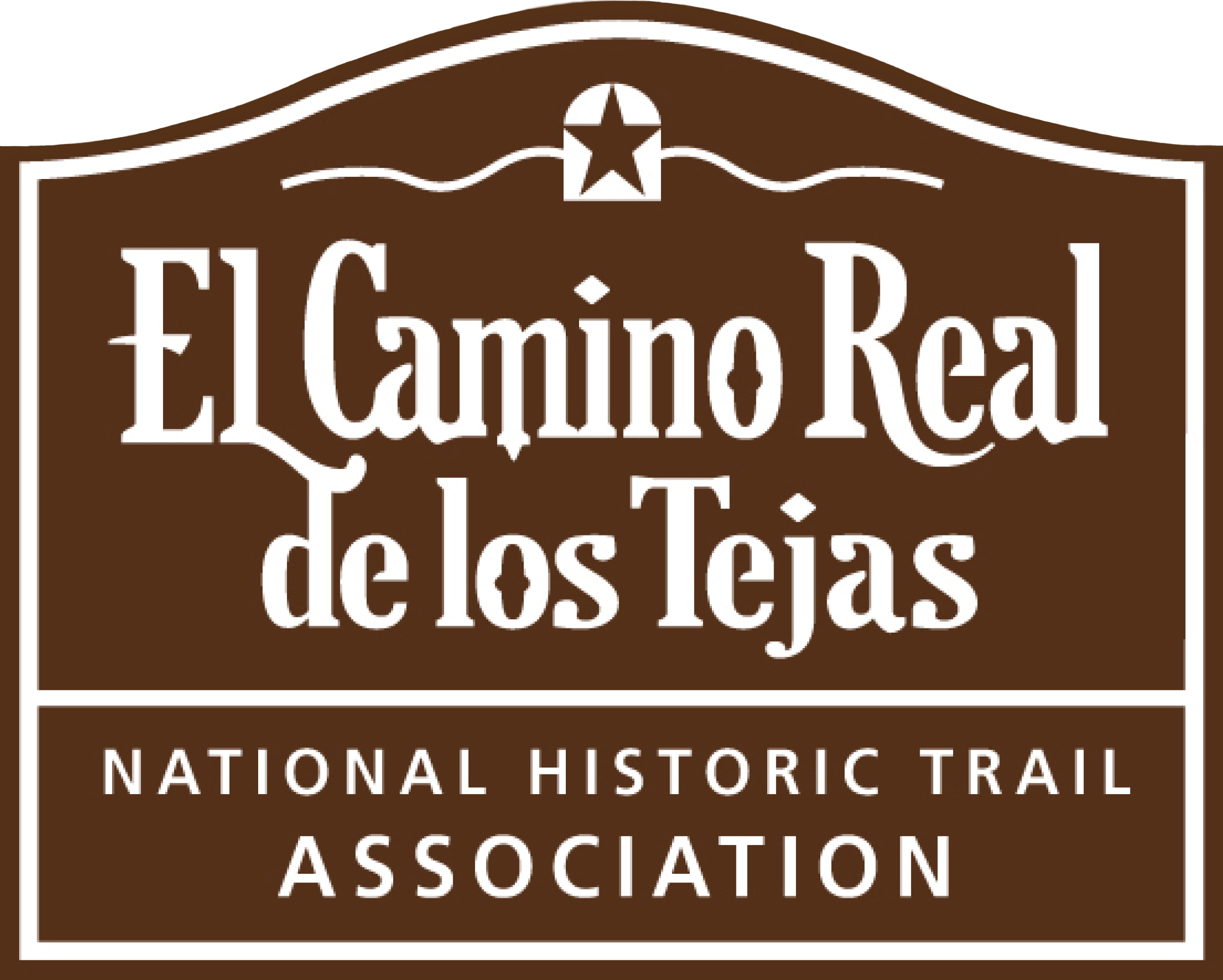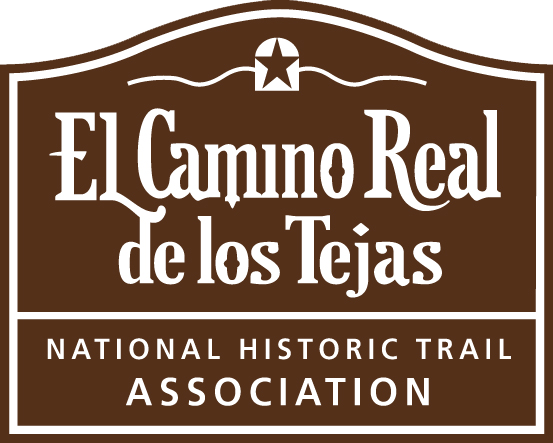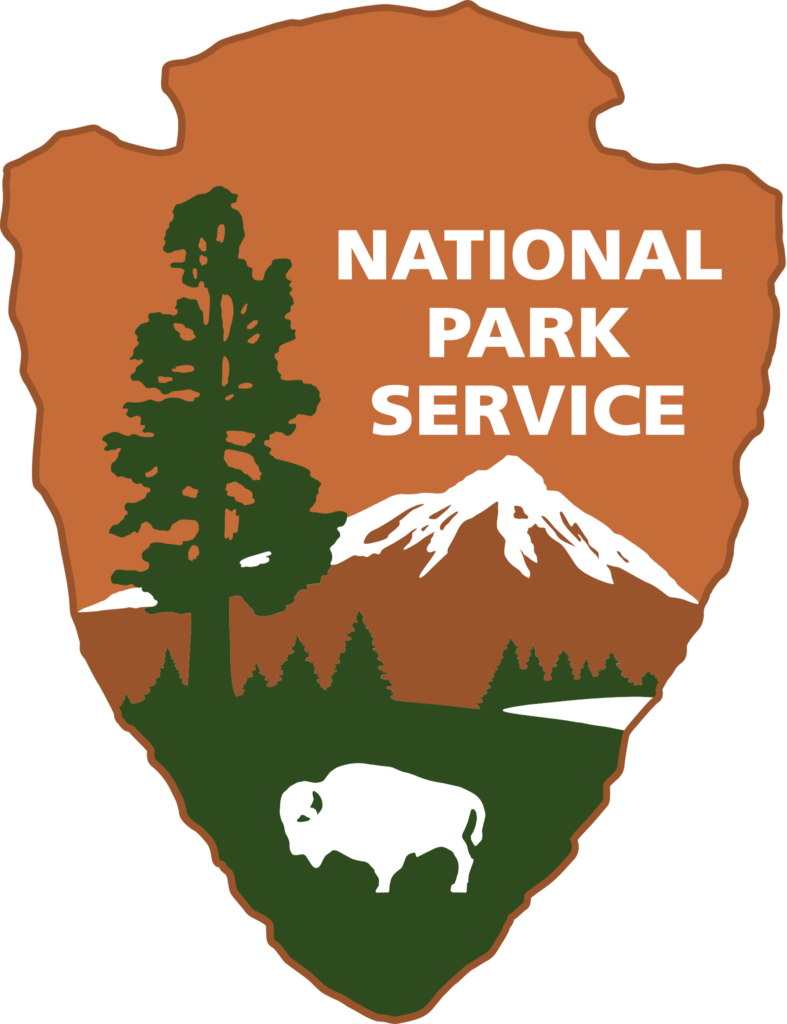History of El Camino Real de los Tejas
By Steven Edward Gonzales
Spanish presence in the northeast quadrant of its new kingdom was expedited by the arrival of the Frenchman, René Robert Cavelier, Sieur de La Salle, on the coast of Texas in 1685. In search of the mouth of the Mississippi River, La Salle instead over-sailed it and landed near present day Garcitas Creek (McGraw and Sparks 1998, 49, 50). Word of the unintentional French landing in Texas reached Spanish officials in New Spain and inspired them to send out entradas, or military expeditions, in search of their colonial rivals. The entradas were carried out both by sea and land.
According to Castañeda, the first expedition in search of La Salle was conducted by sea in early 1686, as Juan Enríquez Barroto and Antonio Romero set sail from Florida towards the Texas coast (Castañeda 1936, 1: 304). Finding no trace of the French, Barroto and Romero returned empty-handed. Therefore, a second expedition was undertaken in 1687, this time from the port of Veracruz, and under the leadership of Martín de Rivas and Antonio de Iriarte (Castañeda 1936, 1: 307). This expedition reached as far as Matagorda Bay, but did not venture inland where the French colony of Fort Saint Louis, in dire-straits, was barely clinging to existence. Once again, the Spanish fleet returned unsuccessfully to its port. Third and fourth expeditions were made along the coast in search of the colony but, due to un-navigable rivers and inlets, the French were not found. However, as previously stated, expeditions were also conducted by land.
In 1686, two companies of men were sent out from Monterrey and Cadereita (Chipman 2000, 78) in search of the Bahía de Espíritu Santo, where the French colony was believed to be located. Under the leadership of Alonso de León, the expedition explored all the way to the mouth of the Río Grande, came to the determination that La Salle was not located near the mouth of the river, and returned to Cadereita, where their report was filed (Castañeda 1936, 1: 316, 317). However, certain that the French colony was somewhere on the Gulf Coast of Texas, in 1687 the Marquis de Aguayo ordered de León to continue to hunt for them. Once more, de León followed the Río Grande to its mouth and then headed north along the coast until he reached an impassable point, which was likely Baffin Bay (Castañeda 1936, 1: 319). Stymied once again, the expedition returned to Cadereita. Nevertheless, in 1688, de León captured a Frenchman named Jean Géry who would provide the necessary information de León needed to locate the ill-fated colony of La Salle. Therefore, the following year, with Jean Géry in tow, de León returned to Texas.
Castañeda states, “[s]ince this expedition was the first to penetrate as far as the Guadalupe River from the frontiers of Coahuila, [it] has generally been considered as marking the beginnings of Texas” (Castañeda 1936, 1: 333). This time de León was successful in finding Fort Saint Louis. According to Chipman, “de León … recorded a scene of utter devastation. A fort near the creek and five crude houses … had been sacked, furniture smashed, dishes broken, books and documents torn apart and scattered. What the Indian attackers had not wanted or carried off, they had destroyed. Three corpses, one apparently a woman, lay among the ruins” (Chipman 2000, 83). Further, having sent a letter to the land of the Tejas Indians seeking the surrender of any French who may have been there, de León retrieved two Frenchmen and returned to Coahuila (Chipman 2000, 83).
Having discovered the ruins of the French colony, along with word from the Tejas Indians that they were seeking Christianity after having been visited by María de Agreda, the Lady in Blue, who seems to have been a miraculous incarnation that visited the Tejas, Spanish evangelic and military ambitions determined that it was necessary to establish missions in East Texas among the Tejas Indians. Therefore, in 1690 de León and Father Massanet set out with a force of 110 men to assist in the creation of the first missions in Texas. Chipman states, “de León marched the full expedition on to the Neches River, where on May 22 he encountered a settlement of the Tejas. After a brief search for an ideal site, the foundations for the first mission in East Texas, San Francisco de los Tejas, were laid, and mass was celebrated in the new church on June 1” (Chipman 2000, 89). Spanish missionary aspirations and El Camino Real de los Tejas had been established in Texas.
With the foundation of the mission and presidio of San Juan Bautista on the Río Grande in 1700 and the settlement of San Fernando de Béxar and San Antonio de Valero in 1718, El Camino Real de los Tejas was becoming a major route of travel in the Spanish colonial period. Many expeditions, as well as the removal of the East Texas missions closer to the presidial line of fortifications along the Northern Frontier of New Spain, resulted in a well-established link that facilitated trade and movement between the colonial territories of Spain and France in Texas and Louisiana and, later, the movement of U.S. settlers heading west. The latter period requires further mention at this point.
An early recorded instance of a U.S. citizen utilizing El Camino Real de los Tejas was when Moses Austin headed west to San Antonio along the path, seeking to establish a colony in Spanish Texas (The Handbook of Texas Online 2001). In San Antonio, he met with the Baron de Bastrop, who influenced Governor Antonio María Martínez to endorse the idea of the Austin Colony. Tragically, Moses Austin died in Missouri shortly after receiving word that his colony had been approved. Therefore, his son, Stephen F. Austin traveled along the road to make good on his father’s contract in San Antonio. Around that same time, many Anglo-American colonists entered Texas at Gaines Ferry on the Sabine and arrived at Nacogdoches and the interior of Texas over the road (The Handbook of Texas Online 2001). Further, as relations between the Mexican government and its Anglo citizens deteriorated, “the road was valuable as a conduit along which volunteers from the United States could be quickly funneled to battlegrounds around San Antonio de Béxar” (Hardin 1998, 225). Plus, figures such as Sam Houston and David Crockett also followed the road as they entered Texas. Concerning Crockett, it is said that, “[his] route was down the Mississippi River to the Arkansas and then up that river to Little Rock; overland to Fulton, Arkansas, and up the Red River along the northern boundary of Texas; across the Red River, through Clarksville, to Nacogdoches and San Augustine; and on to San Antonio” (The Handbook of Texas Online 2001). It can even be claimed that Crockett would have continued to follow El Camino Real de los Tejas all the way to San Juan Bautista on the Río Grande had he not met his fate at the Battle of the Alamo, for he wrote in his last known letter, “I have taken the oath of government and have enrolled my name as a volunteer and will set out for the Rio Grand in a few days with the volunteers from the United States” (The Handbook of Texas Online 2001).
Consequently, it can be said that many a valiant person traversed El Camino Real de los Tejas from the time of de León, to Crockett, and beyond. De la Teja said it well when he stated, “How then to describe the camino real? First, it might almost be considered a living thing: ever changing its humors, taking on new roles and responsibilities, responding to the needs of a developing frontier province. The obstacles of travel on the road made the wayfarer respectful and fearful of it. Anyone wishing to go from Texas to the rest of the world had to be patient with the road, for it had a slow and evasive nature. Second, the caminos were the arteries that kept Texas alive” (De la Teja 1998, 48). Therefore, it is plain to see that the Native American footpath that had long existed in the region was a lifeline that facilitated the spread of European culture and influence among what became known as El Camino Real de los Tejas. This path initially facilitated Spanish expansion northeastward toward present day Louisiana in search of their French imperial rivals. Then, over 130 years later, this same path allowed Anglo settlers from the U.S. to begin heading southwest into Texas to seek their fortune. Over time, this dynamic ebb and flow of people, cultures, and trade created the modern state of Texas as we know it today. Therefore, El Camino Real de los Tejas is deserving of its designation as a National Historic Trail.
For more detailed information about the history of the trail, please click here.
References Cited
Castañeda, Carlos E. 1936. Our Catholic heritage in Texas, 1519 – 1936. Vol. 1, The mission era: The finding of Texas, 1519 – 1693. Austin: Von Boeckmann-Jones Company, Publishers.
Chipman, Donald E. 2000. Spanish Texas, 1519 – 1821. Austin, TX: University of Texas Press.
De la Teja, Jesús F. 1998. The Camino Real: Colonial Texas’ lifeline to the world. In A Texas legacy: The Old San Antonio Road and the Caminos Reales, A tricentennial history, 1691-1991, 2d ed,eds. A. Joachim McGraw, John W. Clark, Jr., and Elizabeth A. Robbins, 43 – 48. Austin, TX: Texas Department of Transportation.
Hardin, Stephen L. 1998. The Old San Antonio Road in the Texas Revolution. In A Texas legacy: The Old San Antonio Road and the Caminos Reales, A tricentennial history, 1691-1991, 2d ed,eds. A. Joachim McGraw, John W. Clark, Jr., and Elizabeth A. Robbins, 225 – 228. Austin, TX: Texas Department of Transportation.
McGraw, Joachim A. 1998. Introduction. In A Texas legacy: The Old San Antonio Road and the Caminos Reales, A tricentennial history, 1691-1991, 2d ed,eds. A. Joachim McGraw, John W. Clark, Jr., and Elizabeth A. Robbins, 3 – 10. Austin, TX: Texas Department of Transportation.
McGraw, Joachim A. and Lee E. Sparks. 1998. Spanish eyes turn to the northern frontier. In A Texas legacy: The Old San Antonio Road and the Caminos Reales, A tricentennial history, 1691-1991, 2d ed,eds. A. Joachim McGraw, John W. Clark, Jr., and Elizabeth A. Robbins, 49 – 59. Austin, TX: Texas Department of Transportation.
The Handbook of Texas Online. 2001. “David Crockett,” The Handbook of Texas Online. Home page on-line. Available from here (last accessed 03 April 2007).
The Handbook of Texas Online. 2001. “Moses Austin,” The Handbook of Texas Online. Home page on-line. Available from here (last accessed 31 March 2007).
The Handbook of Texas Online. 2001 “Old San Antonio Road,” The Handbook of Texas Online. Home page on-line. Available from here (last accessed 26 March 2007).




